#rock-hewn church
Explore tagged Tumblr posts
Text
Church of St. George, Lalibela, Ethiopia: The Church of Saint George is one of eleven rock-hewn monolithic churches in Lalibela, a town in the Amhara Region of Ethiopia. Originally named Roha, the historical and religious site was named Lalibela after the King Gebre Mesqel Lalibela of the Zagwe dynasty, who commissioned its construction. Wikipedia
#Church of St. George#Ethiopian Orthodox Tewahedo Church#rock-hewn church#Monolithic church#North Wollo Zone#Amhara Region#Ethiopia#Lalibela#africa#african continent
509 notes
·
View notes
Text

page 562 - other guy is telling me I'm boring.
I'm telling them to be more awake.
They're telling me to be quiet so they can sleep.
I'm asking them how can I be boring if they're just trying to sleep.
They're grunting at me? No it's a laugh, they just laugh weird.
#economics#economy#economist#equilibrium price shortages and surpluses#unstable equilibrium#equilibrium#unstable#surplus#shortage#time#lalibela#ethiopia#tigray#amharic#orthodox#church#rock hewn church#stone church#building#architecture
10 notes
·
View notes
Text


Girl sits outside a church in Mekele, during Lent; Ethiopian Orthodox priest holds a cross inside a rock church in Lalibela, Amhara region
(x)
#stumbled upon rock-hewn churches and fell so deeply in love; led me here#ethiopian orthodoxy#christianity#aes#mine
3 notes
·
View notes
Text
Ethiopian angel art products collection
Visit my Redbubble shop, for cool artwork on awesome products!👇
Click here⚡

#ethiopian#artwork#redbubble#cultural#ethiopianuniqueartstore#ethiopia#embosscreativestudio#art#artist on redbubble#artist on tumblr#products#angel art#angel#iconic art#christianity#rock hewn churches#church#ethiopian religious art#religious art#stickers#art collection
3 notes
·
View notes
Text
c. 12th Century

Lalibela Church in ETHIOPIA
118 notes
·
View notes
Text

The World Heritage Site of Lalibela is famed for its striking churches, hewn from the surrounding rock some 800 years ago, Ethiopia, 2018 - by George Steinmetz (1957), American
593 notes
·
View notes
Text
The Church of St. George - Lalibela, Ethiopia 🇪🇹
Also known as Bete Giyorgis, is one of the most iconic structures in Lalibela, Ethiopia. Carved entirely out of solid rock in the 12th century, it is part of a complex of eleven rock-hewn churches in Lalibela, all of which are UNESCO World Heritage Sites.
The church is renowned for its unique cross-shaped design and is considered a masterpiece of Ethiopian architecture and religious art.
It is a significant pilgrimage site for Ethiopian Orthodox Christians and attracts visitors from around the world due to its historical and cultural importance.
🎥 @nuethiopia.travel
96 notes
·
View notes
Text
open starter!!
setting -> Gemjabet Mariyam, the smallest of the rock hewn churches, just after sunset
status -> CLOSED, not accepting replies

with their prayers said, and some of them genuine this time, ariyan lingered behind as the skies turned from shades of orange && pink to a navy midnight with a gradual descent into night. belly && mind full from the day's events of delicious feasting, talks of diplomacy, and hands shook - ariyan was wound up, fingers pressing into the stone as eyes gazed at the colorful artwork splattered across every surface. they dressed now as a shah would - wearing medallions of persia, a ring with turkish gold && jewel, hair braided beneath an ornate headpiece that screamed their importance. each item felt perfect, the weight of such glory felt && desired, and ariyan kept their head held high as they gazed upon ethiopia's finest religious masterpieces to brag of.
the sound of another caught the acting ruler's attention, and they turned slowly to greet another, gauging which face to present for optimal outcome. " who could believe ethiopian nights could rival the beauty of day? if you listen, you can hear the sounds of the wild just outside. " ari paused, silence coating the church. " i wonder if they too have come to pray for peace. " noticing a lack of guards, eyebrows rose. " are you here unescorted? "

31 notes
·
View notes
Text

15 𝙄𝙣𝙩𝙚𝙧𝙚𝙨𝙩𝙞𝙣𝙜 𝙁𝙖𝙘𝙩𝙨 𝘼𝙗𝙤𝙪𝙩 𝙀𝙩𝙝𝙞𝙤𝙥𝙞𝙖🇪🇹
1. The Ethiopian 🇪🇹 calendar is different from the Gregorian calendar. There are thirteen months in the Ethiopian calendar, which means they are currently in 2014.
2. Ethiopians 🇪🇹 also measure the hours of a day to a different schedule based on the logic that the clock starts when the day does. Ethiopia, however, observes 13 calendar months per year. This makes the Ethiopian calendar 7 years behind the rest of the world.
3. Ethiopia 🇪🇹 is the only African country never to have been brought under colonial rule. The Itàlians tried but failed woefully and were defeated by the solid Ethiopian forces.
4. Ethiopia 🇪🇹 has the world's 0ldest Bible and the most unique.
5. Ethiopia 🇪🇹 is home to one of the world's best coffee. In fact, coffee production is huge in Ethiopia.
6. According to some archaeological findings, Ethiopia 🇪🇹 is the cradle of humànkind. Meaning lifè actually started in Ethiopia.
7. In 1960, an Ethiopian named Abebe Bikila became the first Black African to win gold in the Olympics. He won it by running barefoot.
8. Addis Ababa's name translates to ‘New Flower’ in Amharic. The city is one of the oldest cities in the world.
9. Ethiopia 🇪🇹 is home to some of the world's tastiest, healthiest and most diverse cuisines on the continent of Africa.
10. The biggest festival in Ethiopia, Timket, is a three-day annual festival that honours the baptism of Jesus Christ in the river Jordan. It's one of the world's largest festivals that takes place annually. The festival attracts millions of people from all over the world.
11. Ethiopia 🇪🇹 has the most UNESCO World Heritage Sites on the continent. Ethiopia takes first place as the African country with the most UNESCO World Heritage sites. There are 9 total ranging from religious sites to natural areas. Among them are the Simien National Park, Konso Cultural Landscape and the rock-hewn churches.
12. Over 80 languages are spoken in Ethiopia. There are over 80 languages spoken with English being the language of educational systems in addition to local languages which include Oromo, Amharic, Somali and Tigrinya.
13. Over half of Africa’s mountains are in Ethiopia 🇪🇹 Along with Ethiopia’s incredible cultural and historical significance, the natural beauty is in a league of its own. In addition to a gorgeous landscape of low desserts and volcanic plateaus, Ethiopia is incredibly mountainous. In fact, around 70% of Africa’s mountains are in Ethiopia.
14. Ethiopia 🇪🇹 is Africa’s oldest country. Originally founded in 980 BC, Ethiopia is the oldest independent nation on the continent. Additionally, Ethiopia has remnants of some of the most ancient human beings on earth dating back millions of years making it one of the most important archaeological areas in the world. Not only that, but it is the second most populated country with more than 106 million people.
15. Ethiopia 🇪🇹 is the only country in the world with its own unique Alphabet.
51 notes
·
View notes
Text
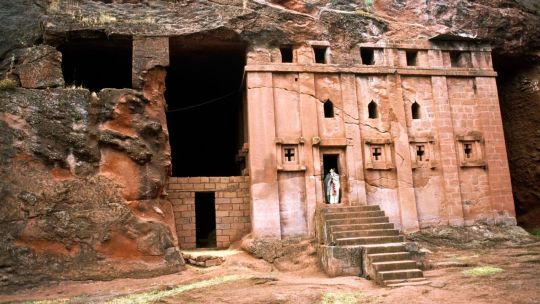
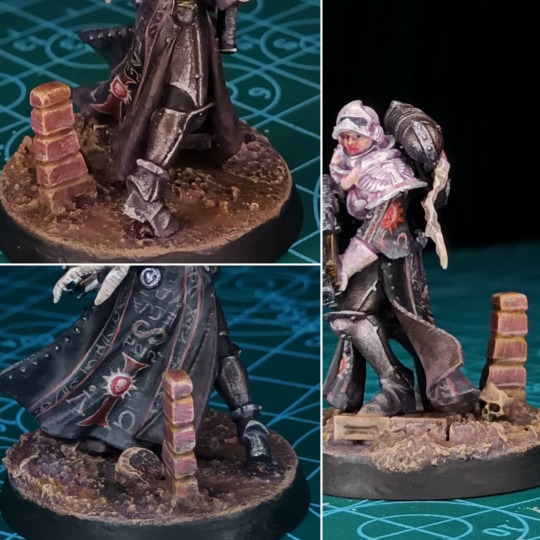

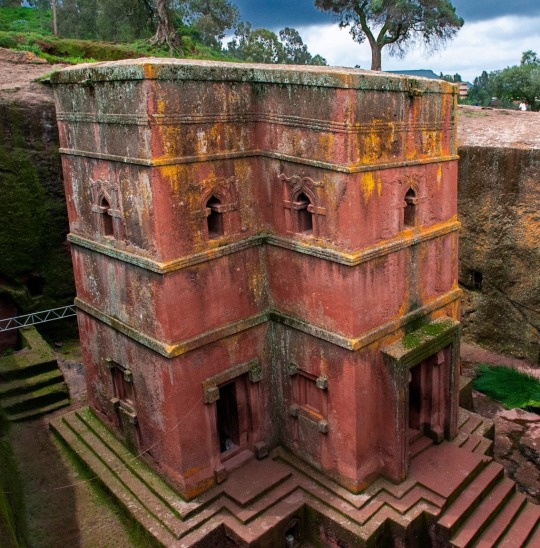
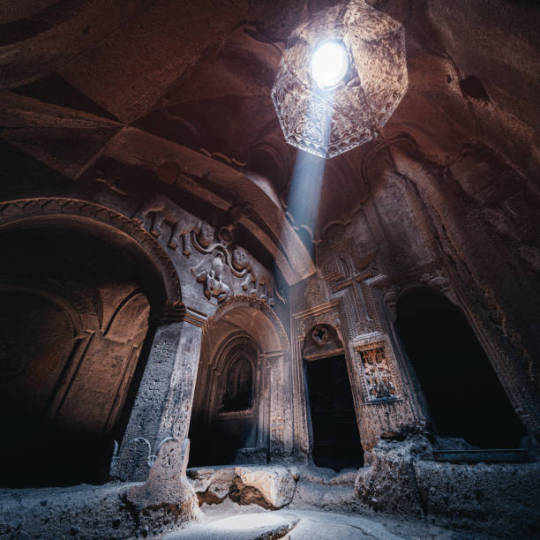
The reddish-pink rocks & masonry on this sister's base were inspired by Ethiopia's rock-hewn churches, Armenia's Geghard monastery and the album art for Zola Jesus' Arkhon (shot in the Cave of the Mounds, Wisconsin USA).
16 notes
·
View notes
Text

page 562 -There is a time and a place for isolation. Thought and reflection can yield enormous benefit.
You can even lose yourself entirely. So long as it is by choice.
But it takes community to understand that some people grunt-laugh and fart at the same time after being chained in a dungeon for X time, while others just prattle on about machine learning while drawing mysterious stone churches that vanish into the landscape even as they emerge from it.
Just another Saturday night!
#economics#economy#economist#equilibrium price shortages and surpluses#unstable equilibrium#equilibrium#unstable#surplus#shortage#time#pius#lalibela#stone church#rock hewn#building#construction#party#P-A-R-T-Y#ethiopia#rock church#adze#chisel#community#friends#family#live laugh love
6 notes
·
View notes
Text
Ethiopia 🇪🇹 (as well as Yemen 🇾🇪, Sudan 🇸🇩 Eritrea 🇪🇷 & Djibouti 🇩🇯):
Christianity spread to Africa way before it arrived in Europe. This means that The Kingdom Of Aksum, located mostly in what is now Ethiopia, was one of the first countries with Christianity as the state religion.
Here are some beautiful ancient rock-hewn churches from that era, still found in Ethiopia!



5 notes
·
View notes
Text
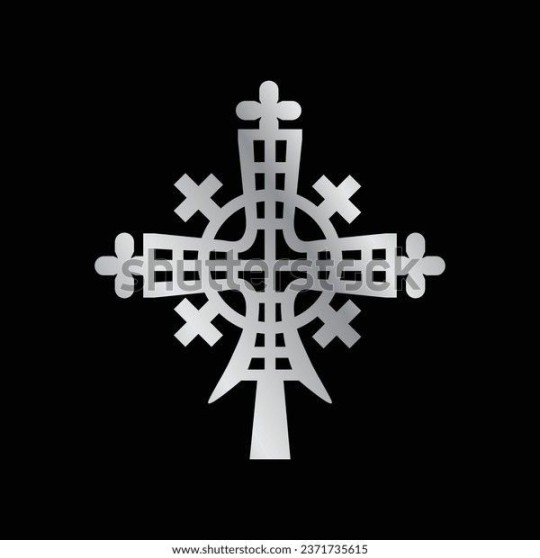
Ethiopian unique cross vector art 💚💛❤️
Ethiopian Christian orthodox silver cross design. Typically found in the Northern Ethiopia orthodox church monasteries and rock hewn churches. Vector Illustration.
#ethiopian cross#rock hewn churches#monastry#northern ethiopia#cross art#art#ethiopian#religious symbolism#cross#faith#Christianity#antique#christian#church#ancient cross#orthodox church#shape#silver#geometric#ornament#vector#illustration#digital illustration#ethiopianuniqueartstore#embosscreativestudio#cultural#ethiopia#artist on tambler#shutterstock collection
1 note
·
View note
Text
The God of the Corycian Cave
“Nothing yet found at Olba [in Anatolia, modern-day Republic of Türkiye] throws light on the nature of the god who was worshipped there under the Greek name of Zeus. But at two places near the coast, distant only some fourteen or fifteen miles from Olba, a deity also called Zeus by the Greeks was revered in natural surroundings of a remarkable kind, which must have stood in close relation with the worship, and are therefore fitted to illustrate it. In both places the features of the landscape are of the same general cast, and at one of them the god was definitely identified with the Zeus of Olba. The country here consists of a tableland of calcareous rock rent at intervals by those great chasms which are characteristic of a limestone formation. Similar fissures, with the accompaniment of streams or rivers which pour into them and vanish under ground, are frequent in Greece, and may be observed in our own country [i.e., England] near Ingleborough [a mountain] in Yorkshire. Fossil bones of extinct animals are often found embedded in the stalagmite or breccia [a type of sedimentary rock] of limestone caves. For example, the famous Kent's Hole near Torquay [in England] contained bones of the mammoth, rhinoceros, lion, hyaena, and bear; and red osseous breccias, charged with the bones of quadrupeds which have long disappeared from Europe, are common in almost all the countries bordering on the Mediterranean. Western Cilicia is richer in Miocene deposits than any other part of Anatolia, and the limestone gorges of the coast near Olba are crowded with fossil oysters, corals, and other shells. Here, too, within the space of five miles the limestone plateau is rent by three great chasms, which Greek religion associated with Zeus and Typhon. One of these fissures is the celebrated Corycian cave.

Corycian Cave, exterior view.
(Source: Zde, CC BY-SA 4.0 https://creativecommons.org/licenses/by-sa/4.0, via Wikimedia Commons)
“To visit this spot, invested with the double charm of natural beauty and legendary renown, you start from the dead Cilician city of Corycus on the sea, with its ruined walls, towers, and churches, its rock-hewn houses and cisterns, its shattered mole [harbor], its island-fortress, still imposing in decay. Viewed from the sea, this part of the Cilician coast, with its long succession of white ruins, relieved by the dark wooded hills behind, presents an appearance of populousness and splendour. But a nearer approach reveals the nakedness and desolation of the once prosperous land. Following the shore westward from Corycus for about an hour you come to a pretty cove enclosed by wooded heights, where a spring of pure cold water bubbles up close to the sea, giving to the spot its name of Tatlu-su, or the Sweet Water. From this bay a steep ascent of about a mile along an ancient paved road leads inland to a plateau. Here, threading your way through a labyrinth or petrified sea of jagged calcareous rocks, you suddenly find yourself on the brink of a vast chasm which yawns at your feet. This is the Corycian cave. In reality it is not a cave but an immense hollow or trough in the plateau, of oval shape and perhaps half a mile in circumference. The cliffs which enclose it vary from one hundred to over two hundred feet in depth. Its uneven bottom slopes throughout its whole length from north to south, and is covered by a thick jungle of trees and shrubs—myrtles, pomegranates, carobs, and many more, kept always fresh and green by rivulets, underground water, and the shadow of the great cliffs. A single narrow path leads down into its depths. The way is long and rough, but the deeper you descend the denser grows the vegetation, and it is under the dappled shade of whispering leaves and with the purling of brooks in your ears that you at last reach the bottom. The saffron which of old grew here among the bushes is no longer to be found, though it still flourishes in the surrounding district. This luxuriant bottom, with its rich verdure, its refreshing moisture, its grateful shade, is called Paradise by the wandering herdsmen. They tether their camels and pasture their goats in it and come hither in the late summer to gather the ripe pomegranates. At the southern and deepest end of this great cliff-encircled hollow you come to the cavern proper. The ruins of a Byzantine church, which replaced a heathen temple, partly block the entrance. Inwards the cave descends with a gentle slope into the bowels of the earth. The old path paved with polygonal masonry still runs through it, but soon disappears under sand. At about two hundred feet from its mouth the cave comes to an end, and a tremendous roar of subterranean water is heard. By crawling on all fours you may reach a small pool arched by a dripping stalactite-hung roof, but the stream which makes the deafening din is invisible. It was otherwise in antiquity. A river of clear water burst from the rock, but only to vanish again into a chasm. Such changes in the course of streams are common in countries subject to earthquakes and to the disruption caused by volcanic agency. The ancients believed that this mysterious cavern was haunted ground. In the rumble and roar of the waters they seemed to hear the clash of cymbals touched by hands divine.
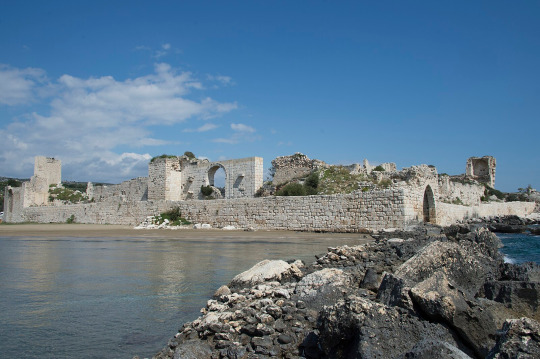
The island-fortress and mole at Korykos (Corycus).
(Source: Dosseman, CC BY-SA 4.0 https://creativecommons.org/licenses/by-sa/4.0, via Wikimedia Commons)
“If now, quitting the cavern, we return by the same path to the summit of the cliffs, we shall find on the plateau the ruins of a town and of a temple at the western edge of the great Corycian chasm. The wall of the holy precinct was built within a few feet of the precipices, and the sanctuary must have stood right over the actual cave and its subterranean waters. In later times the temple was converted into a Christian church. By pulling down a portion of the sacred edifice Mr. [James Theodore] Bent had the good fortune to discover a Greek inscription containing a long list of names, probably those of the priests who superintended the worship. One name which meets us frequently in the list is Zas, and it is tempting to regard this as merely a dialectical form of Zeus. If that were so, the priests who bore the name might be supposed to personate the god. But many strange and barbarous-looking names, evidently foreign, occur in the list, and Zas may be one of them. However, it is certain that Zeus was worshipped at the Corycian cave; for about half a mile from it, on the summit of a hill, are the ruins of a larger temple, which an inscription proves to have been dedicated to Corycian Zeus.
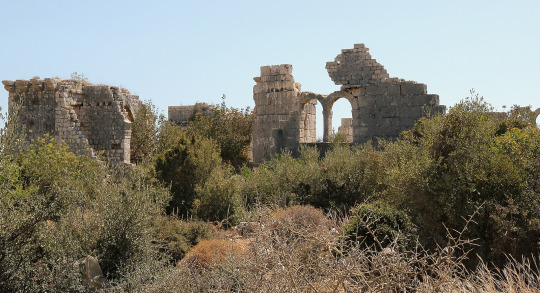
Ruins of a basilica at Korykos.
(Source: Ingeborg Simon, CC BY-SA 3.0 https://creativecommons.org/licenses/by-sa/3.0, via Wikimedia Commons)
“But Zeus, or whatever native deity masqueraded under his name, did not reign alone in the deep dell. A more dreadful being haunted a still more awful abyss which opens in the ground only a hundred yards to the east of the great Corycian chasm. It is a circular cauldron, about a quarter of a mile in circumference, resembling the Corycian chasm in its general character, but smaller, deeper, and far more terrific in appearance. Its sides overhang and stalactites droop from them. There is no way down into it. The only mode of reaching the bottom, which is covered with vegetation, would be to be lowered at the end of a long rope. The nomads call this chasm Purgatory, to distinguish it from the other which they name Paradise. They say that there is a subterranean passage between the two, and that the smoke of a fire kindled in the Corycian cave may be seen curling out of the other. The one ancient writer who expressly mentions this second and more grisly cavern is Mela, who says that it was the lair of the giant Typhon, and that no animal let down into it could live. Aeschylus puts into the mouth of Prometheus an account of ‘the earth-born Typhon, dweller in Cilician caves, dread monster, hundred-headed,’ who in his pride rose up against the gods, hissing destruction from his dreadful jaws, while from his Gorgon eyes the lightning flashed. But him a flaming levin bolt, crashing from heaven, smote to the very heart, and now he lies, shrivelled and scorched, under the weight of Etna by the narrow sea. Yet one day he will belch a fiery hail, a boiling angry flood, rivers of flame, to devastate the fat Sicilian fields. This poetical description of the monster, confirmed by a similar passage of Pindar, clearly proves that Typhon was conceived as a personification of those active volcanoes which spout fire and smoke to heaven as if they would assail the celestial gods. The Corycian caverns are not volcanic, but the ancients apparently regarded them as such, else they would hardly have made them the den of Typhon.
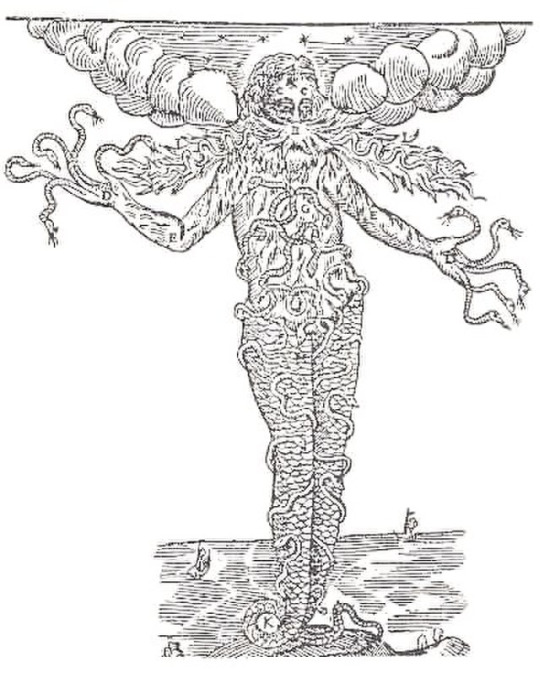
An engraving of Typhon, from the first volume of Athanasius Kircher's Oedipus Aegyptiacus (1652-54).
(Source: Athanasius Kircher, Public Domain, via Wikimedia)
“According to one legend Typhon was a monster, half man and half brute, begotten in Cilicia by Tartarus upon the goddess Earth. The upper part of him was human, but from the loins downward he was an enormous snake. In the battle of the gods and giants, which was fought out in Egypt, Typhon hugged Zeus in his snaky coils, wrested from him his crooked sword, and with the blade cut the sinews of the god's hands and feet. Then taking him on his back he conveyed the mutilated deity across the sea to Cilicia, and deposited him in the Corycian cave. Here, too, he hid the severed sinews, wrapt in a bear's skin. But Hermes and Aegipan contrived to steal the missing thews and restore them to their divine owner. Thus made whole and strong again, Zeus pelted his beaten adversary with thunderbolts, drove him from place to place, and at last overwhelmed him under Mount Etna. And the spots where the hissing bolts fell are still marked by jets of flame….
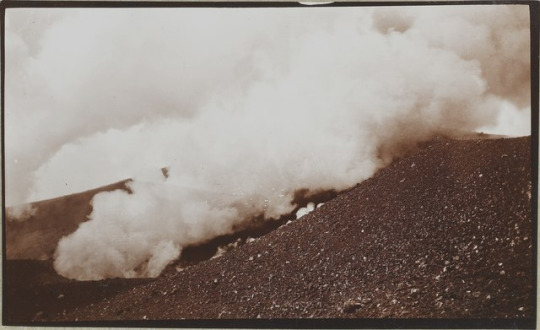
A photograph of Mount Ætna in Sicily, by Immanuel Friedlaender (1910).
(Source: Immanuel Friedlaender, Public domain, via Wikimedia Commons)
“About five miles to the north-east of the Corycian impassable rocks, is another and very similar chasm. It may be reached in about an hour and a quarter from the sea by an ancient paved road, which ascends at first very steeply and then gently through bush-clad and wooded hills. Thus you come to a stretch of level ground covered with the well-preserved ruins of an ancient town. Remains of fortresses constructed of polygonal masonry, stately churches, and many houses, together with numerous tombs and reliefs, finely chiselled in the calcareous limestone of the neighbourhood, bear witness to the extent and importance of the place. Yet it is mentioned by no ancient writer. Inscriptions prove that its name was Kanyteldeis or Kanytelideis, which still survives in the modern form of Kanidiwan [Kanlıdivane, in the Republic of Türkiye]. The great chasm opens in the very heart of the city. So crowded are the ruins that you do not perceive the abyss till you are within a few yards of it. It is almost a complete circle, about a quarter of a mile wide, three-quarters of a mile in circumference, and uniformly two hundred feet or more in depth. The cliffs go sheer down and remind the traveller of the great quarries at Syracuse [in Sicily]. But like the Corycian caves, the larger of which it closely resembles, the huge fissure is natural; and its bottom, like theirs, is overgrown with trees and vegetation. Two ways led down into it in antiquity, both cut through the rock. One of them was a tunnel, which is now obstructed; the other is still open. Remains of columns and hewn stones in the bottom of the chasm seem to show that a temple once stood there. But there is no cave at the foot of the cliffs, and no stream flows in the deep hollow or can be heard to rumble underground. A ruined tower of polygonal masonry, which stands on the southern edge of the chasm, bears a Greek inscription stating that it was dedicated to Olbian Zeus by the priest Teucer, son of Tarkuaris. The letters are beautifully cut in the style of the third century before Christ. We may infer that at the time of the dedication the town belonged to the priestly kings of Olba, and that the great chasm was sacred to Olbian Zeus.
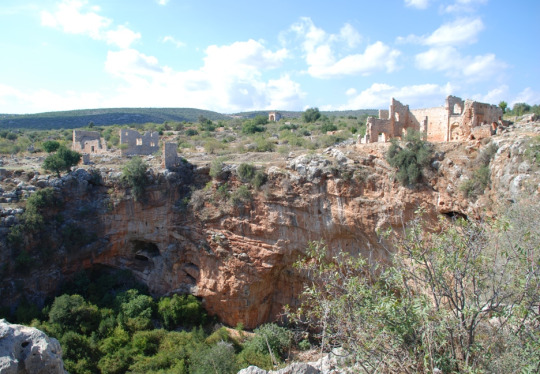
The chasm at the center of the ruins of the Greek city once known as Kanyteldeis.
(Source: Elelicht, CC BY-SA 3.0 https://creativecommons.org/licenses/by-sa/3.0, via Wikimedia Commons)
“What, then, was the character of the god who was worshipped under the name of Zeus at these two great natural chasms? The depth of the fissures, opening suddenly and as it were without warning in the midst of a plateau, was well fitted to impress and awe the spectator; and the sight of the rank evergreen vegetation at their bottom, fed by rivulets or underground water, must have presented a striking contrast to the grey, barren, rocky wilderness of the surrounding tableland. Such a spot must have seemed to simple folk a paradise, a garden of God, the abode of higher powers who caused the wilderness to blossom, if not with roses, at least with myrtles and pomegranates for man, and with grass and underwood for his flocks.… In rainless countries the sky-god is deprived of one of the principal functions which he discharges in cool cloudy climates like that of Europe. He has, in fact, little or nothing to do with the water-supply, and has therefore small excuse for levying a water-rate on his worshippers. Not, indeed, that Cilicia is rainless; but in countries bordering on the Mediterranean the drought is almost unbroken through the long months of summer. Vegetation then withers: the face of nature is scorched and brown: most of the rivers dry up and only their white stony beds, hot to the foot and dazzling to the eye, remain to tell where they flowed. It is at such seasons that a green hollow, a shady rock, a murmuring stream, are welcomed by the wanderer in the South with a joy and wonder which the untravelled Northerner can hardly imagine. Never do the broad slow rivers of England, with their winding reaches, their grassy banks, their grey willows mirrored with the soft English sky in the placid stream, appear so beautiful as when the traveller views them for the first time after leaving behind him the aridity, the heat, the blinding glare of the white southern landscape, set in seas and skies of caerulean blue.

The ruins of Kanyteldeis, now known as Kanlıdivane.
(Source: Dosseman, CC BY-SA 4.0 https://creativecommons.org/licenses/by-sa/4.0, via Wikimedia Commons)
“We may take it, then, as probable that the god of the Corycian and Olbian caverns was worshipped as a source of fertility. In antiquity, when the river, which now roars underground, still burst from the rock in the Corycian cave, the scene must have resembled Ibreez [at Cappadocia in Anatolia], where the god of the corn and the vine was adored at the source of the stream; and we may compare the vale of Adonis in the Lebanon, where the divinity who gave his name to the river was revered at its foaming cascades. The three landscapes had in common the elements of luxuriant vegetation and copious streams leaping full-born from the rock. We shall hardly err in supposing that these features shaped the conception of the deities who were supposed to haunt the favoured spots. At the Corycian cave the existence of a second chasm, of a frowning and awful aspect, might well suggest the presence of an evil being who lurked in it and sought to undo the beneficent work of the good god. Thus we should have a fable of a conflict between the two, a battle of Zeus and Typhon.

Temple of Zeus in Olba, in the Republic of Türkiye.
(Source: HALUK COMERTEL, CC BY 3.0 https://creativecommons.org/licenses/by/3.0, via Wikimedia Commons)
“On the whole we conclude that the Olbian Zeus, worshipped at one of these great limestone chasms, and clearly identical in nature with the Corycian Zeus, was also identical with the Baal of Tarsus, the god of the corn and the vine, who in his turn can hardly be separated from the god of Ibreez. If my conjecture is right the native name of the Olbian Zeus was Tark or Trok, and the priestly Teucers of Olba represented him in their own persons. On that hypothesis the Olbian priests who bore the name of Ajax embodied another native deity of unknown name, perhaps the father or the son of Tark. A comparison of the coin-types of Tarsus with the Hittite monuments of Ibreez and Boghaz-Keui led us to the conclusion that the people of Tarsus worshipped at least two distinct gods, a father and a son, the father-god being known to the Semites as Baal and to the Greeks as Zeus, while the son was called Sandan by the natives, but Hercules by the Greeks. We may surmise that at Olba the names of Teucer and Ajax designated two gods who corresponded in type to the two gods of Tarsus; and if the lesser figure at Ibreez, who appears in an attitude of adoration before the deity of the corn [i.e., of the grain] and the vine, could be interpreted as the divine Son in presence of the divine Father, we should have in all three places the same pair of deities, represented probably in the flesh by successive generations of priestly kings. But the evidence is far too slender to justify us in advancing this hypothesis as anything more than a bare conjecture.”
—J. G. Frazer, Adonis, Attis, Osiris, part 1 (The Golden Bough, vol. V, 1914, pp. 152-161)
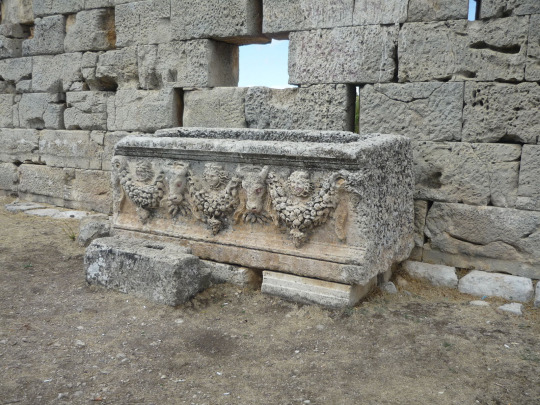
A sarcophagus in the Temple of Zeus Olbius.
(Source: Cobija, CC BY-SA 3.0 https://creativecommons.org/licenses/by-sa/3.0, via Wikimedia Commons)
#long post#beautiful writing#jg frazer#the golden bough#the golden bough vol v#adonis attis osiris#exemplary prose#conjecture#korykos#turkiye#turkey#anatolia#olba#greece#cilicia#corycian cave#Zeus#Zeus Olbius#typhon#james theodore bent#Kanlıdivane#kanyteldeis#nature writing#travel writing#cappadocia#ibreez#comparative religion#comparative mythology
1 note
·
View note
Text
Third day in Georgia!❤️🇬🇪
Leaving Tbilisi (I'll be missing😔) on the way to another region of Georgia

Gere's Mtscheta, the first capital of Georgia (and some souvenirs I bought😅)




...and Svetitskhoveli Cathedral in Mtscheta.

Probably nowhere else in the worlds you can find depiction of zodiac signs inside the church!

Can there be something more cool than georgian letters from medieval times?

Traditional georgian cemetery - each family fence their graves separately

Uplistsikhe, an ancient rock-hewn town










Gori and museum of Stalin, with his private train and a little hut in which he was born (like some damn "stable in Bethlehem"...🤦)




The room about his crimes is small and generally more abt Russia than abt Stalin

I wanted not to spend and money on memory of one of the evilest persons in human history😑 But there is nothing else that would bring tourists to Gori otherwise - thanks to the museum many ppl have their jobs... We left some money buying a hot bread - (the one "to die for" in ATWD❤️ Also the next thing that my subconscience made me buy was a drink that turned out to be... a salt-carmel milkshake😆 it was really good😋)

There's ton of dogs in Georgia, they're literally everywhere. All marked to be vaccinated against rabies (but not neutered bc it is said to be... "unnatural". Sure, hungry dogs having hungry puppies is so damn natural...) To these two on the left we could only give our day-old leftover khinkali and khachapuri. The one on the right is in Kutaisi - you pet the dog and he'll walk along with you and bark at cars for you😭


Kutaisi finally


#georgia#საქართველო#just me#my trip to georgia#I didn't manage to make this part yesterday. arrived to Batumi and it rains like hell...#my travels#kutaisi#mccheta
2 notes
·
View notes
